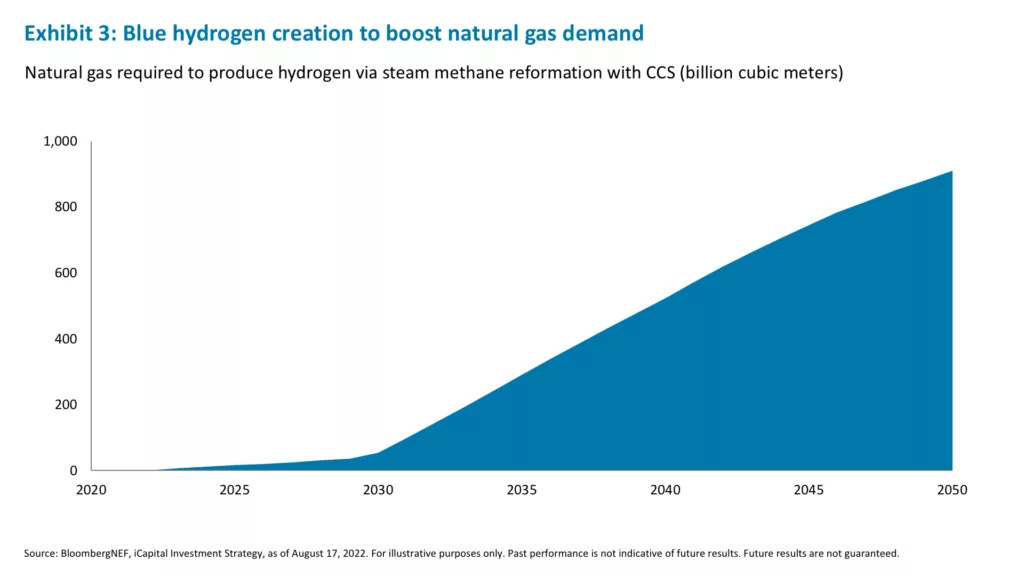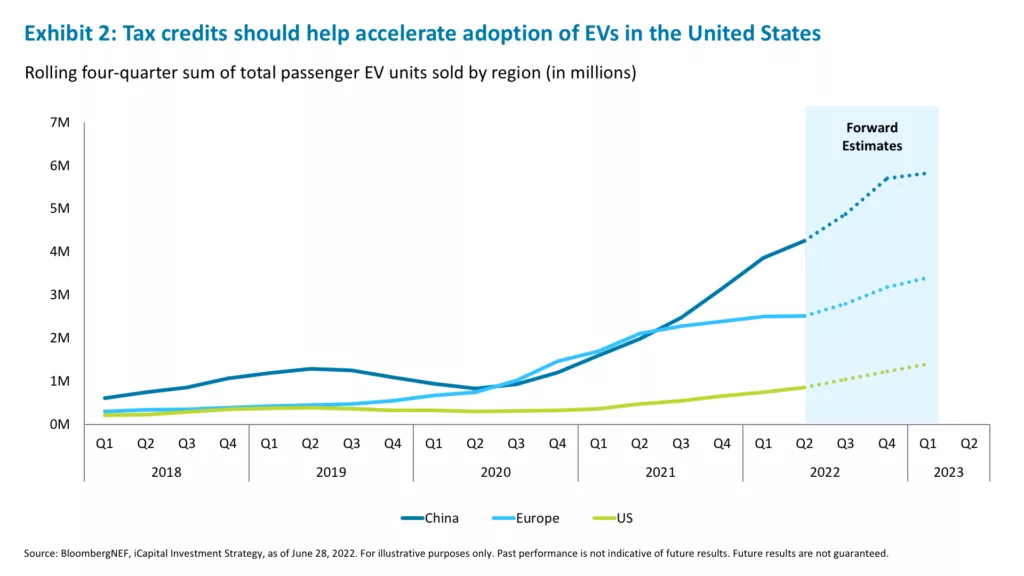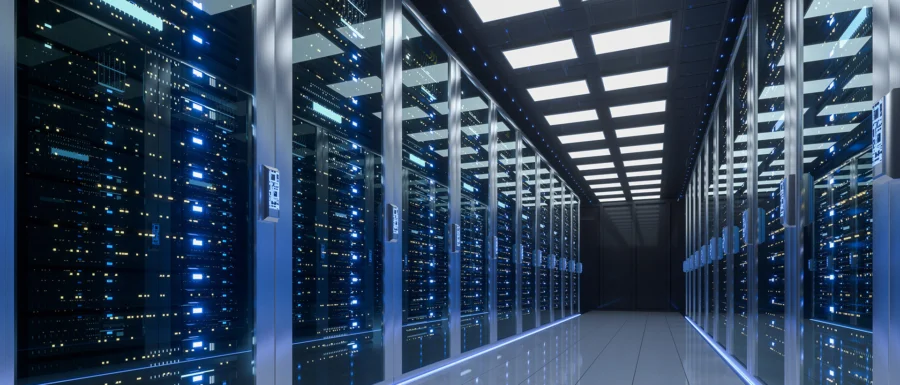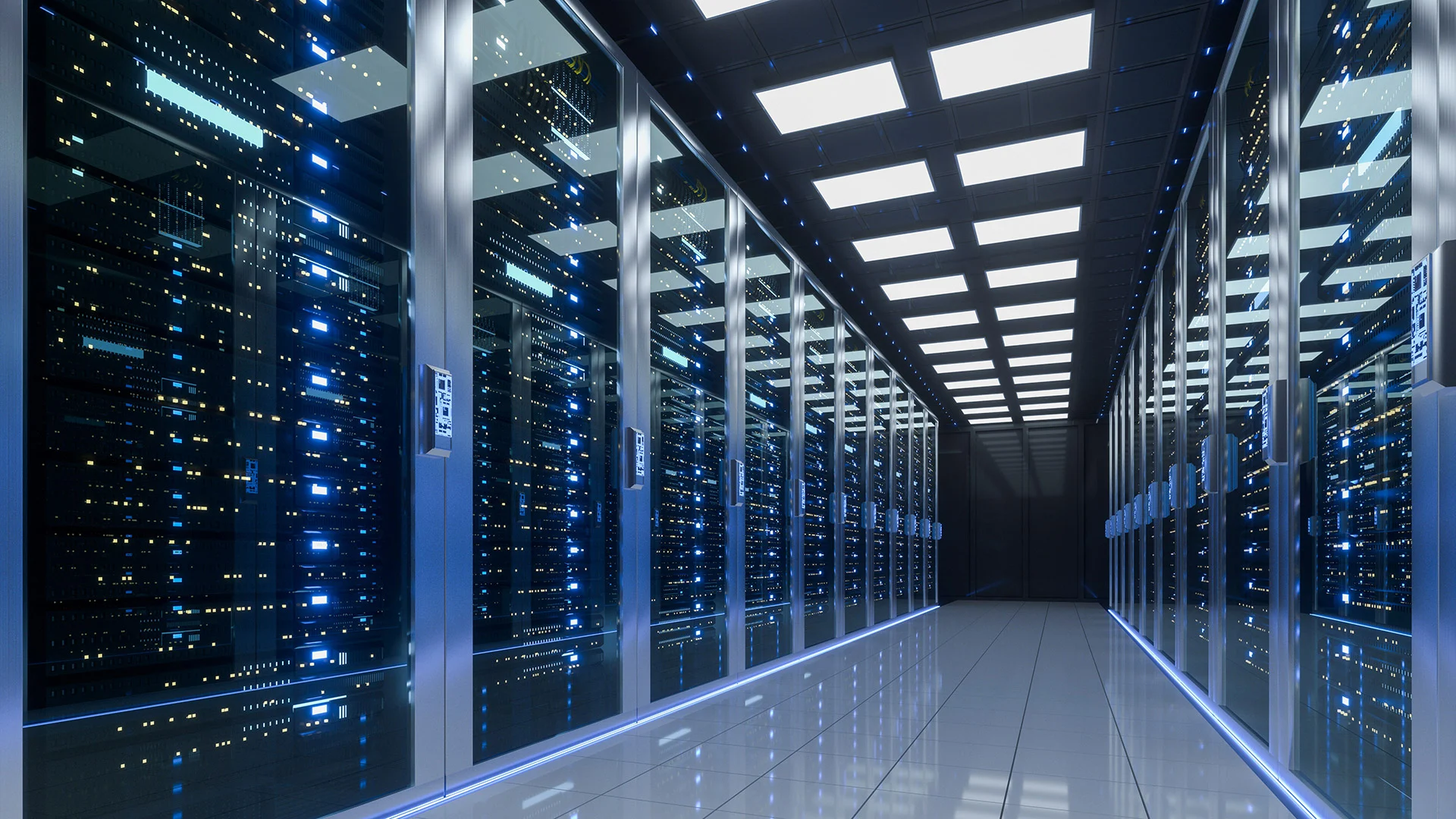On Tuesday, President Biden signed the Inflation Reduction Act (IRA), long-awaited legislation that provides significant support for clean energy development in the United States. Many clean tech stocks had already rallied in anticipation, rising 18.7% since July 27 when – to the surprise of many investors – the IRA was revived.1 This means that the final signing of this bill could actually be a “sell the news” moment for clean energy stocks, and we would not be surprised to see them fall in the near term given the magnitude and speed of the recent rally. However, looking longer term we see the IRA as a major catalyst for a re-rating the sector needed. In this week’s commentary we discuss why – despite the recent rally and especially if we see a pullback – investors may want to buy dips in clean energy.
A broad path to 40% greenhouse gas emissions reduction
The $369 billion in climate and energy provisions aims to put the United States on a path to reduce greenhouse gas (GHG) emissions by roughly 40% by 2030.2 The newly passed legislation provides incentives to decarbonize many parts of the economy, including the transport, power, industry, residential housing, commercial, and agriculture sectors (See Exhibit 1).

Key measures include:
- Providing a $7,500 electric vehicle (EV) tax credit – albeit with many caveats – to help transition to cleaner transport.3 In the United States, EVs represented 6.5% of new car sales, or over 215,000 units, in the first quarter of the year, and sales are expected to reach 1.2 million in 2022, a nearly 90% year-over-year increase (See Exhibit 2).4 The IRA should help the United States close the gap on Europe and China, where EV adoption is much greater. EV sales accounted for 21.8% and 21.6% of new car sales in the first quarter in Europe and China, respectively.5 This adoption has been driven by government policies incentivizing EV sales. While the EV tax credit in the United States is a limited measure relative to policies adopted in the E.U. and China, it is a step in the right direction.6
- Extending incentives to transition to cleaner electricity generation. The Investment Tax Credit (ITC) can be applied to both residential and commercial (including utility-scale) power generation projects.7 Under the IRA, this credit is set to increase from 26% to 30% and importantly does not step down to zero until 2035.8 Previously, it would have fallen to zero by 2024.9 This ensures a longer runway of policy support, which should encourage ongoing commitments to solar-powered electricity generation. The bill similarly extends the Production Tax Credit (PTC), which had expired but has now been extended through either 2032 or until U.S. power sector emissions decline by 75% versus 2022 levels.10 The PTC applies to wind, nuclear, biomass, hydro, and solar electricity generation projects, and offers credit of roughly $26/MWh (adjusted annually for inflation) for renewable electricity generation, as long as these projects begin construction by the end of 2024.11
- Supporting efforts to reduce emissions from the hard-to-decarbonize industrial sector. The IRA’s allocation of $13 billion for the clean hydrogen tax credit makes green hydrogen competitive with its fossil fuel alternatives.12 In fact by 2029, clean hydrogen tax credit value is expected to cover 100% of production costs for green hydrogen.13 This is important because while renewables like wind and solar can be used to make power generation cleaner, and EVs help reduce emissions in the transport sector, the industrial sector typically has to burn fuel for production. However, hydrogen can be used in oil refining, the production of ammonia, methanol, and steel, as well as in shipping and aviation.14 In addition to making clean hydrogen cost competitive, the IRA allocates $3.2 billion to carbon capture, utilization, and sequestration (CCUS).15 For example, a “grey hydrogen” solution – hydrogen derived from carbon-emitting steam reforming of natural gas – can become low-carbon “blue hydrogen” with the application of CCUS technology.16 Indeed, the demand for natural gas to create blue hydrogen is expected to grow significantly (See Exhibit 3).17
 A big boost for clean energy and its investors
A big boost for clean energy and its investors
So, the bill provides important incentives to a broad array of de-carbonization technologies, which should boost the entire ecosystem of clean energy solutions. The question is, has this all been priced in by the recent stock rally? We do not think so, and see three reasons for optimism on the clean energy ecosystem over the coming months and years:
1. The passage of this bill caught many investors by surprise. For example, according to Goldman Sachs, hedge funds long/short (L/S) positioning in the GS Renewable Energy basket stands at 90%, which is in line with historical levels.18 It is also relatively low in comparison to other growth themes such as secular growth, which has a L/S ratio of 324% or high growth/high margin equities, for which the ratio is 315%.19 Flows to the four largest clean energy ETFs have been negative over the past year, with total aggregate outflows of $545 million.20 All of which means there should be room to add exposure.
2. Valuations in the clean energy sector are not cheap, but are attractive when adjusted for earnings growth. The earnings growth of clean energy stocks is expected to outpace the S&P 500 in the next two or three years as clean energy adoption unfolds.21 For example, the three-year earnings per share compound annual growth rate for the average company in the S&P Global Clean Energy Index is 22.2%, compared with 11.3% for the broader S&P 500 Index.22 And the various incentives in the IRA should further accelerate earnings growth. Additionally, while consensus earnings revisions for the broad market index have been declining, those for renewable energy stocks have remained steady.23 As a result, on a PEG ratio basis (price-to-earnings multiple to growth), they are cheaper than the S&P 500 (See Exhibit 4).24 And a potential slowdown in rate hikes later this year should allow high growth stocks like clean energy to perform better.
 3. The clean energy transition is in its early days and global investment of $100-$150 trillion is needed to achieve net zero by 2050.25 Zooming out, let’s remember that renewable energy today represents only 12% of overall energy supply, but is projected to account for 28% by 2030 and 85% by 2050.26 This is driven by a global commitment to achieve net zero emissions by 2050: National governments representing 91% of global GDP have now made net zero commitments, up from 68% in December 2020.27 This should benefit a wide variety of clean energy technologies, provided by both public and private companies. In fact, the number of private clean energy companies outnumber the number of public ones by seven to one.28 As the global adoption of clean energy scales, we expect to see significant growth in revenues and profitability of the companies involved in providing key solutions.
3. The clean energy transition is in its early days and global investment of $100-$150 trillion is needed to achieve net zero by 2050.25 Zooming out, let’s remember that renewable energy today represents only 12% of overall energy supply, but is projected to account for 28% by 2030 and 85% by 2050.26 This is driven by a global commitment to achieve net zero emissions by 2050: National governments representing 91% of global GDP have now made net zero commitments, up from 68% in December 2020.27 This should benefit a wide variety of clean energy technologies, provided by both public and private companies. In fact, the number of private clean energy companies outnumber the number of public ones by seven to one.28 As the global adoption of clean energy scales, we expect to see significant growth in revenues and profitability of the companies involved in providing key solutions.
1. Bloomberg, as of August 16, 2022. Note: Goldman Sachs US Renewables Basket is used to represent clean tech stocks.
2. U.S. Senate Democrats, “Summary: The Inflation Reduction Act of 2022”, as of August 11, 2022.
3. Inflation Reduction Act of 2022, as of August 11, 2022.
4. BloombergNEF, “2Q 2022 Electrified Transport Market Outlook”, as of June 28, 2022.
5. Ibid.
6. Bloomberg, iCapital Investment Strategy, as of August 16, 2022.
7. Inflation Reduction Act of 2022, as of August 11, 2022.
8. Ibid.
9. IRS, Internal Revenue Code Section 48, Energy Investment Tax Credit, as of August 2022.
10. Inflation Reduction Act of 2022, as of August 11, 2022.
11. Ibid.
12. Shearman & Sterling LLP, BloombergNEF, Inflation Reduction Act of 2022, as of August 15, 2022.
13. BloombergNEF, as of August 15, 2022. Note: calculation looks at the effect of production tax credits on US levelized cost of hydrogen. Green hydrogen calculation assumes production tax credit of $3/kg taken over equal production in each year.
14. IEA, “The Future of Hydrogen,” June 2019.
15. Inflation Reduction Act of 2022, as of August 11, 2022.
16. World Economic Forum, " Grey, blue, green – why are there so many colours of hydrogen?”, as of July 27, 2021.
17. Bloomberg, iCapital Investment Strategy, as of August 17, 2022.
18. Goldman Sachs Global Markets Division, as of August 2, 2022.
19. Ibid. Note: Goldman Sachs Secular Growth Basket is used to represent secular growth and Goldman Sachs High Growth High Margin Basket is used to represent high growth/high margin equities.
20. Bloomberg, iCapital Investment Strategy, as of August 16, 2022. Note: Four largest clean energy ETFs include – I Shares Global Clean Energy ETF, First Trust NASDAQ Clean Edge Energy, Invesco WilderHill Clean Energy ETF, and ALPS Clean Energy ETF.
21. Bloomberg, iCapital Investment Strategy, as of August 16, 2022.
22. Ibid.
23. Goldman Sachs Global Markets Division, as of August 2, 2022.
24. Bloomberg, iCapital Investment Strategy, as of August 16, 2022.
25. Boston Consulting Group, Global Financial Markets Association, “Climate Finance Markets and the Real Economy,” as of December 2020.
26. BloombergNEF, New Energy Outlook 2021, as of July 2021.
27. University of Oxford, “Oxford Net Zero,” as of June 13, 2022.
28. PitchBook, as of November 8, 2021.
IMPORTANT INFORMATION
The material herein has been provided to you for informational purposes only by iCapital, Inc. (“iCapital”). This material is the property of iCapital and may not be shared without the written permission of iCapital. No part of this material may be reproduced in any form, or referred to in any other publication, without express written permission of iCapital.
This material is provided for informational purposes only and is not intended as, and may not be relied on in any manner as, legal, tax or investment advice, a recommendation, or as an offer to sell, a solicitation of an offer to purchase or a recommendation of any interest in any fund or security. You should consult your personal accounting, tax and legal advisors to understand the implications of any investment specific to your personal financial situation. This material does not intend to address the financial objectives, situation or specific needs of any individual investor. Alternative investments are complex, speculative investment vehicles and are not suitable for all investors.
The information contained herein is an opinion only, as of the date indicated, and should not be relied upon as the only important information available. Any prediction, projection or forecast on the economy, stock market, bond market or the economic trends of the markets is not necessarily indicative of the future or likely performance. The information contained herein is subject to change, incomplete, and may include information and/or data obtained from third party sources that iCapital believes, but does not guarantee, to be accurate. iCapital considers this third-party data reliable, but does not represent that it is accurate, complete and/or up to date, and it should not be relied on as such. iCapital makes no representation as to the accuracy or completeness of this material and accepts no liability for losses arising from the use of the material presented. No representation or warranty is made by iCapital as to the reasonableness or completeness of such forward-looking statements or to any other financial information contained herein.
Securities products and services are offered by iCapital Markets, an SEC-registered broker-dealer, member FINRA and SIPC, and an affiliate of iCapital, Inc. and Institutional Capital Network, Inc. These registrations and memberships in no way imply that the SEC, FINRA, or SIPC have endorsed any of the entities, products, or services discussed herein. Annuities and insurance services are provided by iCapital Annuities and Insurance Services LLC, an affiliate of iCapital, Inc. “iCapital” and “iCapital Network” are registered trademarks of Institutional Capital Network, Inc. Additional information is available upon request.
© 2023 Institutional Capital Network, Inc. All Rights Reserved.


















